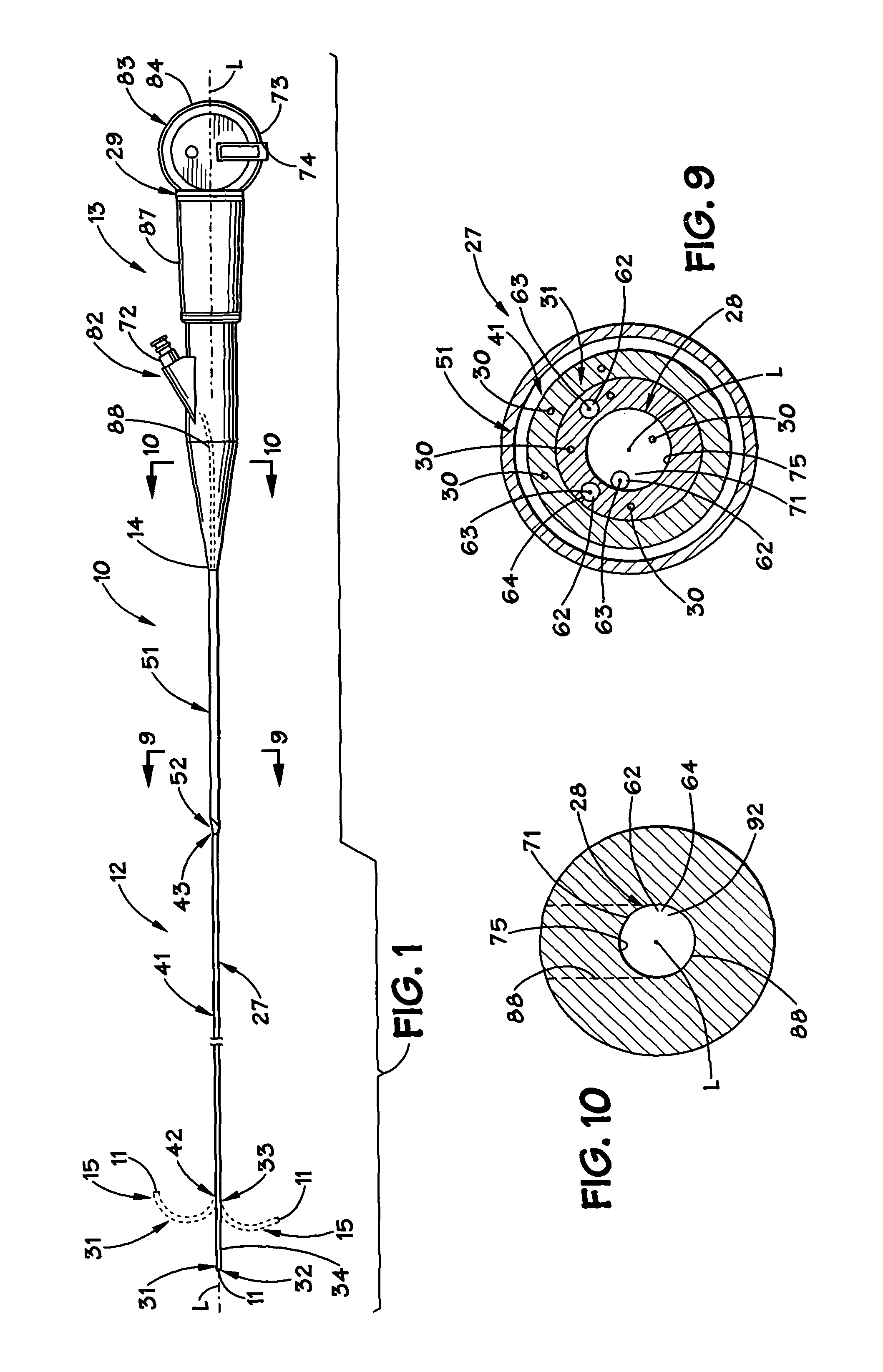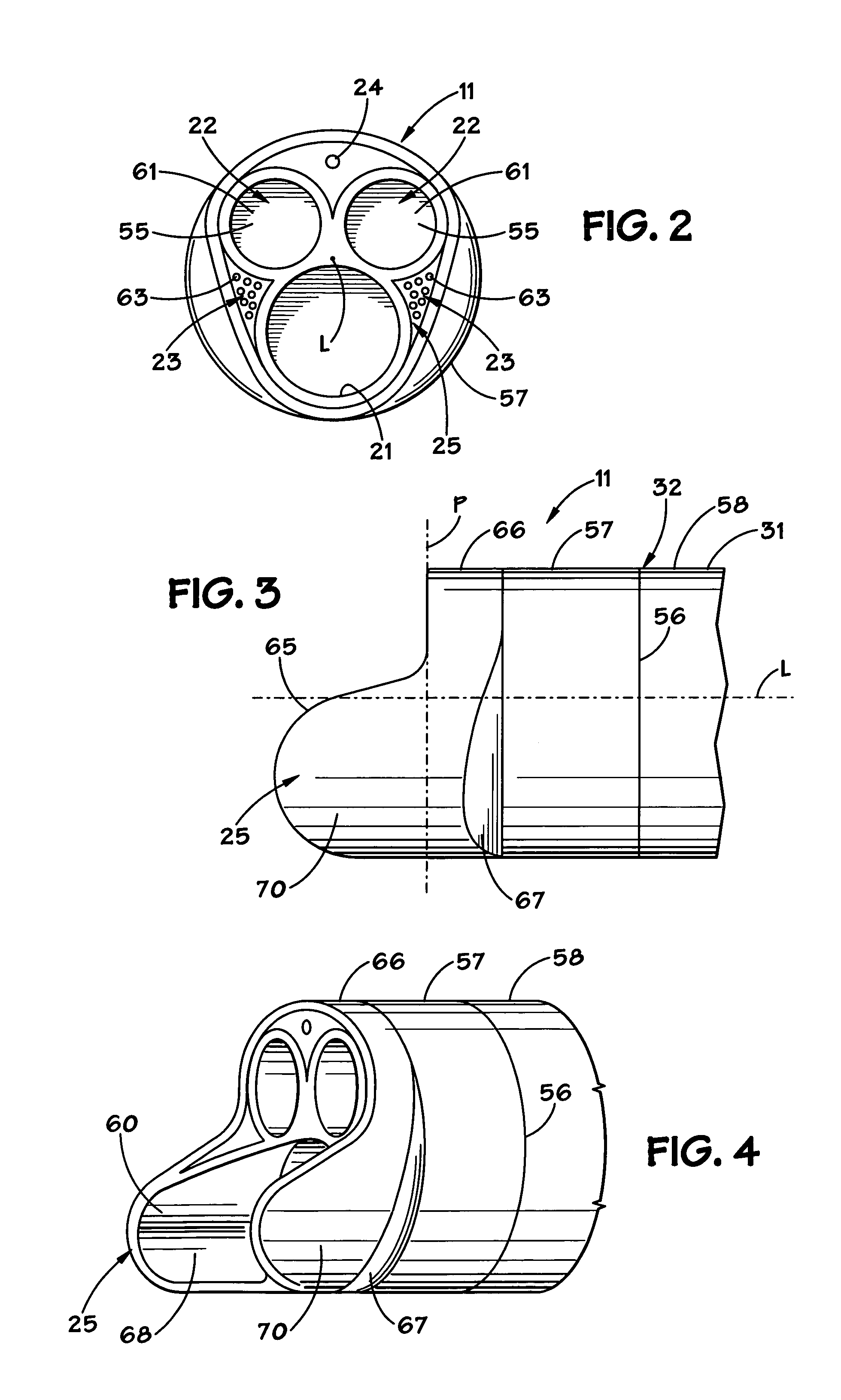System, apparatus, and method for viewing a visually obscured portion of a cavity
a technology of visual obscurement and cavity, applied in the field of exploratory instruments, can solve the problems of large diameter of endoscope, many design and functionality limitations that do not facilitate diagnosis and surgery, and the risk of missing some pathology during diagnosis, so as to prevent the impact of foreign matter
- Summary
- Abstract
- Description
- Claims
- Application Information
AI Technical Summary
Benefits of technology
Problems solved by technology
Method used
Image
Examples
Embodiment Construction
[0036]The present invention will now be described more fully hereinafter with reference to the accompanying drawings which illustrate embodiments of the invention. This invention may, however, be embodied in many different forms and should not be construed as limited to the illustrated embodiments set forth herein. Rather, these embodiments are provided so that this disclosure will be thorough and complete, and will fully convey the scope of the invention to those skilled in the art. Like reference numbers refer to like elements throughout, and the prime notation, if used, indicates similar elements in alternative embodiments. The preferred embodiment of the present invention implements an endoscopic type instrument, or endoscope, which may be in the form of a ureteroscope.
[0037]Referring now to the drawings, a first embodiment of the present invention in the form of a ureteroscope 10 is illustrated in FIGS. 1-4. This ureteroscope 10 is only one of many variations of endoscopes, or ...
PUM
 Login to View More
Login to View More Abstract
Description
Claims
Application Information
 Login to View More
Login to View More - R&D
- Intellectual Property
- Life Sciences
- Materials
- Tech Scout
- Unparalleled Data Quality
- Higher Quality Content
- 60% Fewer Hallucinations
Browse by: Latest US Patents, China's latest patents, Technical Efficacy Thesaurus, Application Domain, Technology Topic, Popular Technical Reports.
© 2025 PatSnap. All rights reserved.Legal|Privacy policy|Modern Slavery Act Transparency Statement|Sitemap|About US| Contact US: help@patsnap.com



